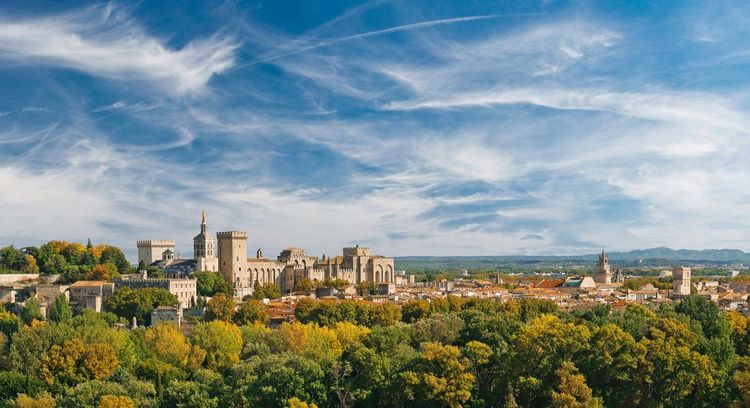The Palais des Papes is the result of a merger between two buildings: the former palace of Benedict XII, a fortification overlooking the Rocher des Doms and the palace, and the more recent palace of Clement VI, the city's most important pope. It was used both as a residence and a fortress throughout the 14th century, and represented the headquarters of the Christian religion in the West.
A vestige of the pontiffs who ruled Avignon in the 14th century, this palace, steeped in its medieval past, is one of the most visited monuments in France. It is the most important Gothic building of the Middle Ages. This architectural feat is attributed to two disciples of Pope John XXII, the first Pope to build the palace. It was he who initiated the movement towards a pontifical residence and who had an audience hall built, the ruins of which can still be seen in the main courtyard. His two successors, Benedict XII and Clement VI, were the true creators of the pontifical palace as we know it today, and entrusted the building work to masters of the art. They also added a Gothic touch, which attracted the cultural centres of the time, such as the painter Mattéo Giovannetti. It was not opened to the public until the 20th century. The fortress has been a UNESCO World Heritage Site since 1995. We take you on a tour of this historic monument.

Panoramic view of the old town and the Popes' Palace, Avignon, France.
- © Andrii Horulko / ShutterstockA brief history of the site
Interior design inspired by Rome
The interior of the monument was almost entirely decorated by Matteo Giovannetti at the instigation of Clement VI. The official painter created a number of large ensembles that bear witness to the attempt to forge closer ties between Avignon and Rome: the chapel of Saint-Martial and the chapel of Saint-Jean.
A master in the art of fresco, Giovannetti invented his own language. His perfect and innovative mastery of portraiture and his virtuosity enabled him to create the ensembles devoted to Saint John, Saint Martial and the prophets.
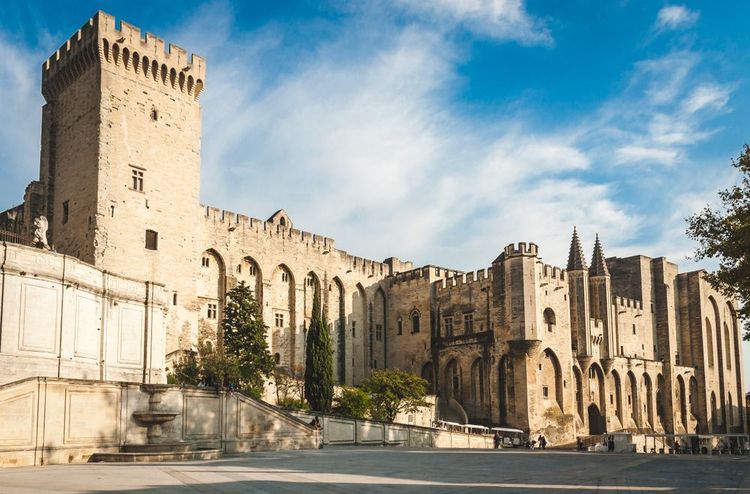
The Campane Tower and the Papal Palace in Avignon, France.
- © finaeva_i / ShutterstockThe palace as a whole contains many treasures, both architectural and pictorial. In the flats of Clement VI, for example, there is an original botanical decoration depicting a dark forest and the many ways of hunting and fishing.
Today, all this work represents a panorama of mid-14th-century painting that is unique in France.
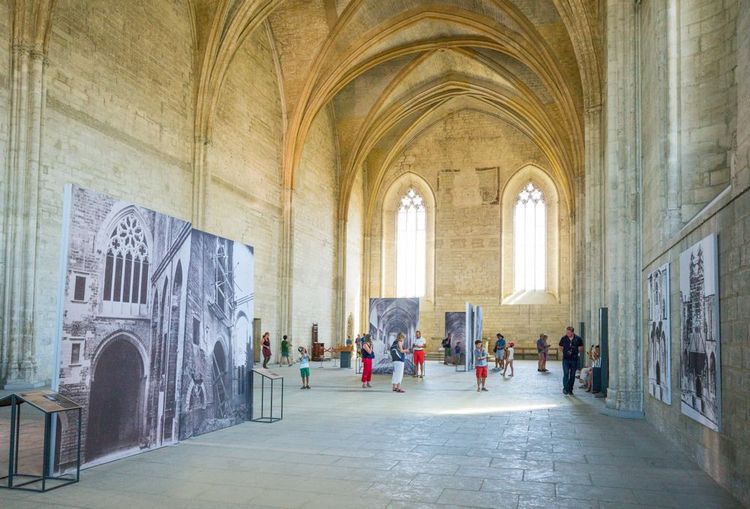
Des visiteurs dans le hall d’entrée du palais des Papes, Avignon, France.
- © Gimas / ShutterstockThe treasures of the Palace
The visit includes the great chapel of Benedict XII, the papal flats and the grand staircase. Even if you spend many hours wandering through these masterpieces of sacred art, it is unlikely that you will be able to visit more than 40% of the palace, which is so immense.
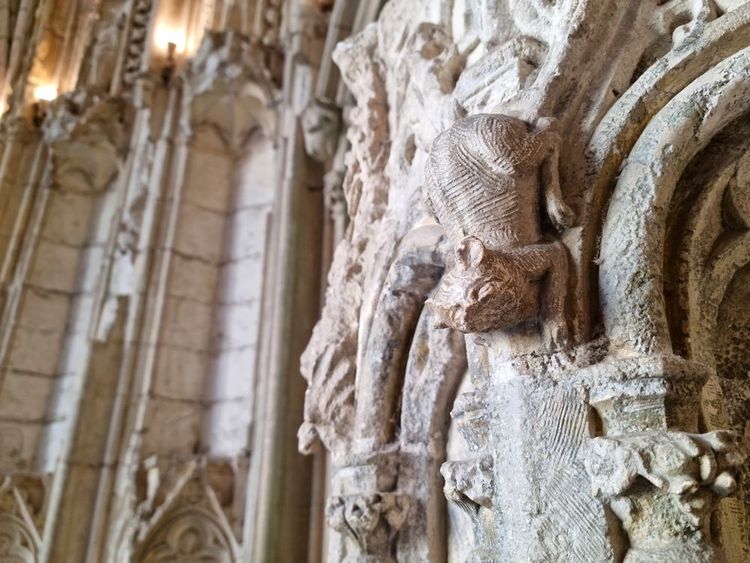
A close-up of an animal sculpture in the Popes' Palace, Avignon, France.
- © Travel-Fr / ShutterstockThe Palais des papes today
In addition, since the major exhibition on Picasso in 1947 (the first to be held in the Palais), international art exhibitions (Botero in 1993, Dubuffet in 1994, Picasso in 1995, Rodin in 1996, Histoires tissées in 97, La beauté in 2000, etc.) have been presented to the public.

Arcades on the grounds of the Palais des Papes, Avignon, France.
- © travelview / ShutterstockThe Palais des Papes d'Avignon also hosts many other events: concerts, temporary exhibitions and, of course, the famous Avignon Festival, for which the Cour d'Honneur is transformed into a veritable theatre. For over 50 years (the first festival was held in 1947), plays and ballets, from little-known works to contemporary stories, have been staged in this magnificent venue.
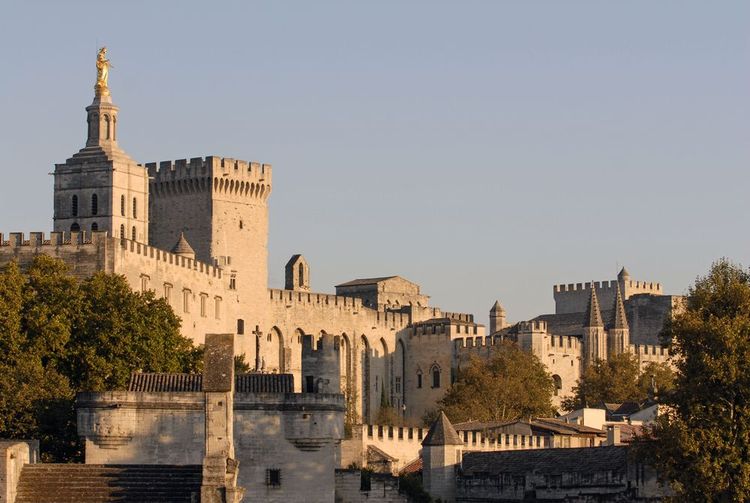
The Popes' Palace at sunset, Avignon, France.
- © Paolo Bona / Shutterstock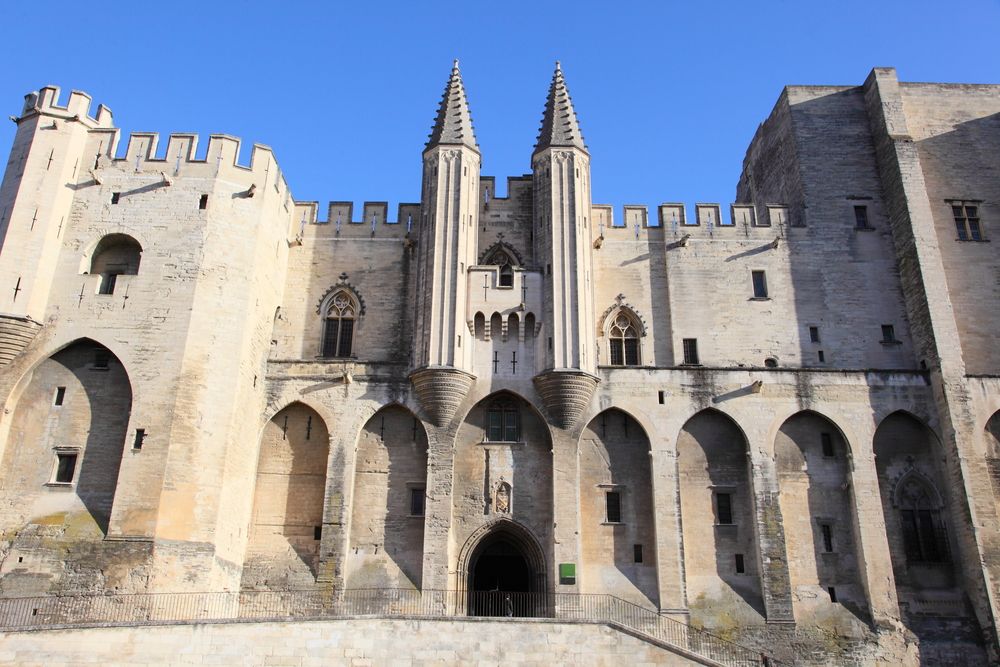 Avignon
Avignon
The history of Avignon and its pontiffs told by a pro!
Immerse yourself in the history of the city and come on board this guided tour that takes in the historic setting of Avignon in medieval times.Practical information
📍 Address:
Place du Palais, 84000 Avignon.
⏰ Opening times:
From 10am to 7pm (all year round). Last admission at 6pm to the Palais and 6.30pm to the Palais gardens.
10am to 7pm (1 September to 6 November). Last admission at 5pm at the Palais and at 5.30pm at the Palais gardens.
👉 Accessibility:
Due to the large number of steps, the site is not accessible to people with reduced mobility.
Eating or drinking in the area
Let's continue the experience, but this time seated. On our way out onto the immense Place du Palais, a number of small cafés face the building and offer a magnificent view of the exterior. It's an opportunity to admire the Gothic architecture in detail one last time. Le Carré du Palais is a charming restaurant located just a few steps from the Papal Palace. The professional team will provide you with a unique and unforgettable dining experience. The restaurant also boasts a fine wine cellar, mainly from the Rhône Valley, as recommended by the in-house sommelier.
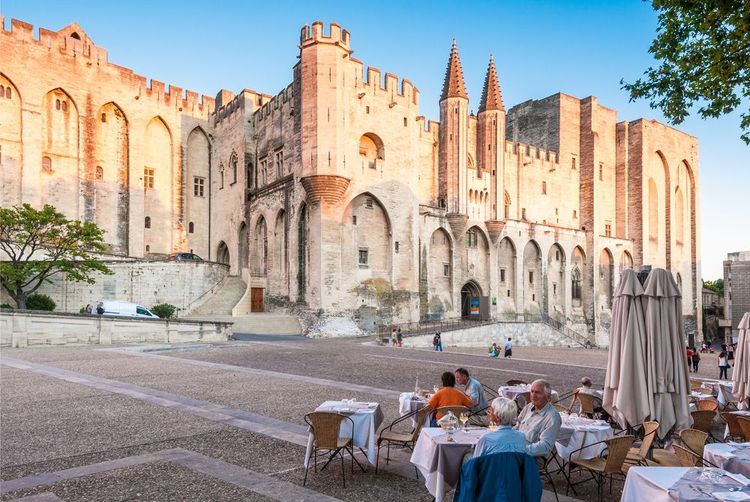
People enjoying a drink on a terrace in Place du Palais, Avignon, France.
- © Konstantin Yolshin / ShutterstockWhere to stay in the Palais district?
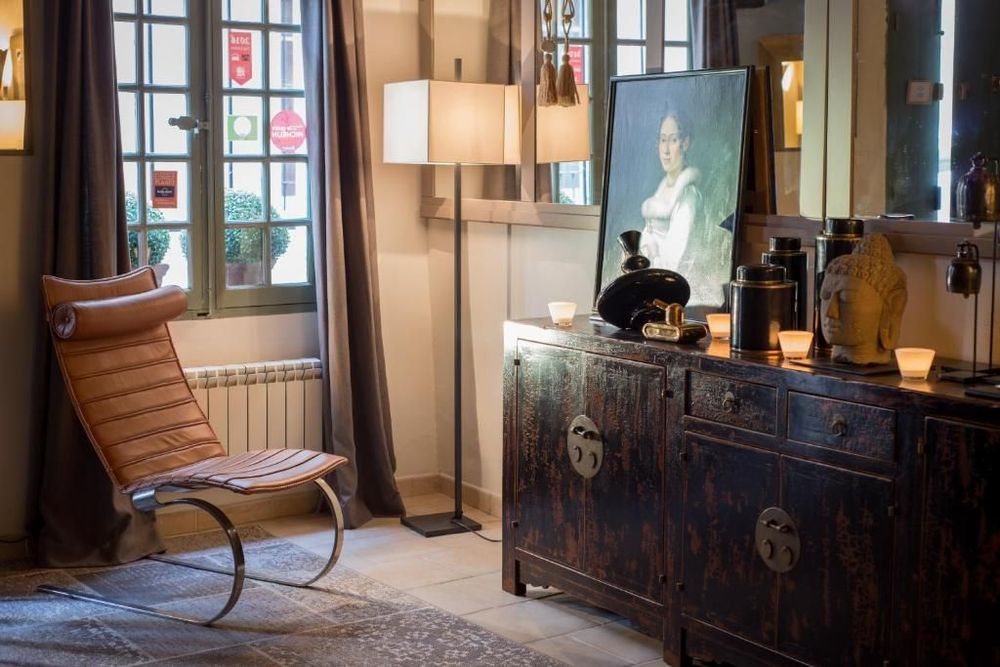 Avignon
Avignon
